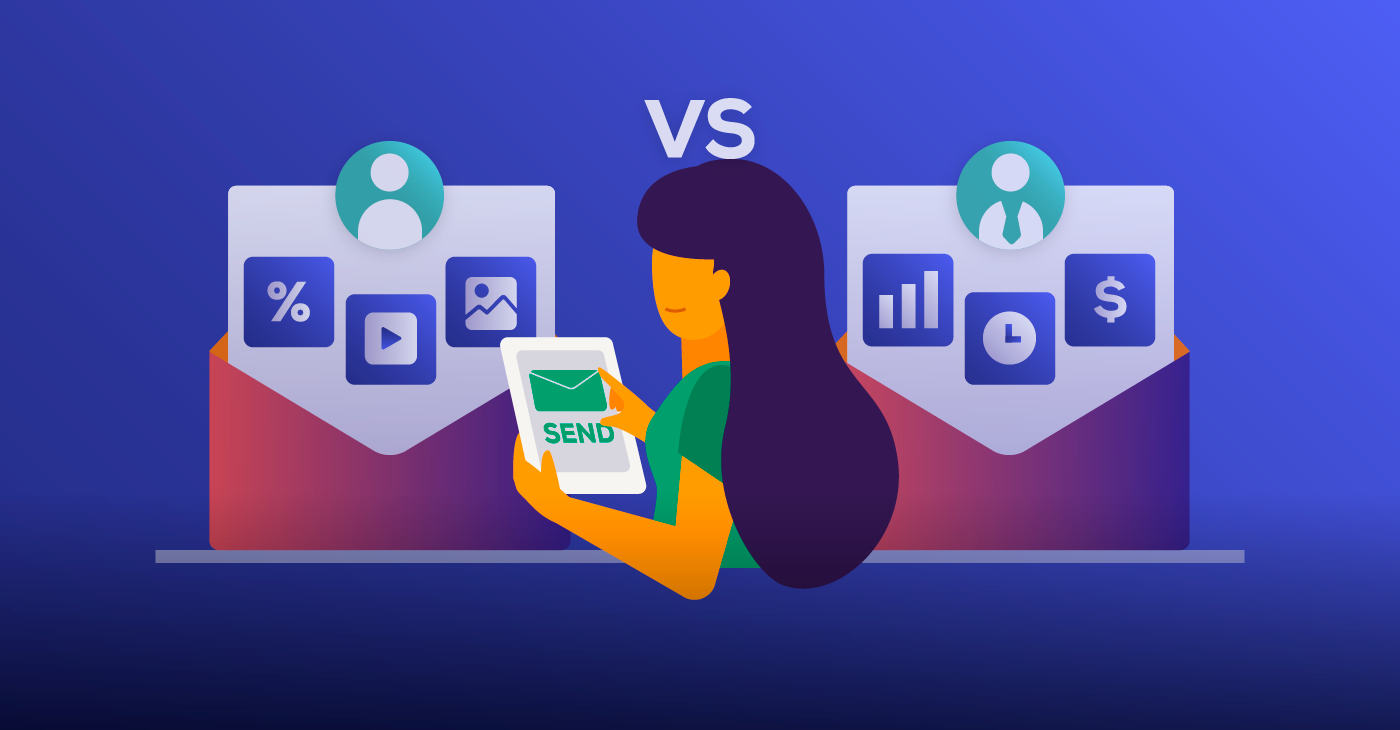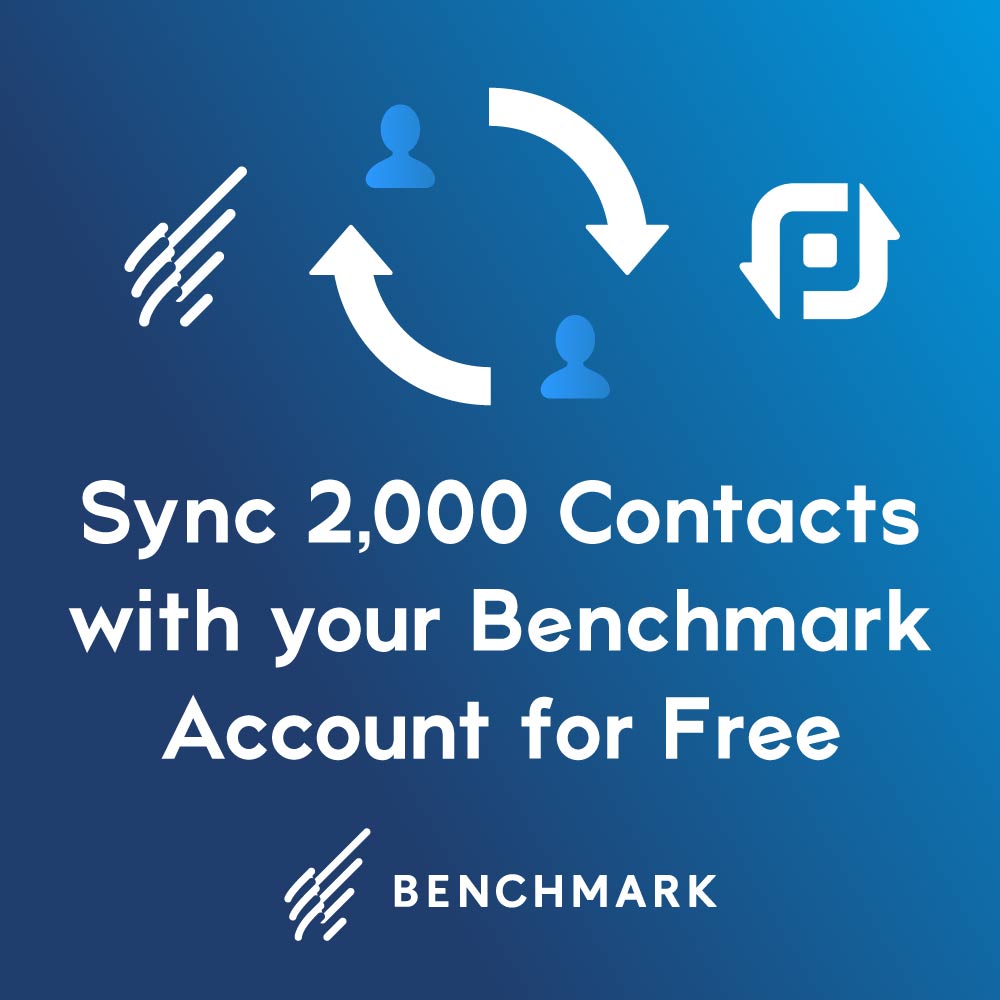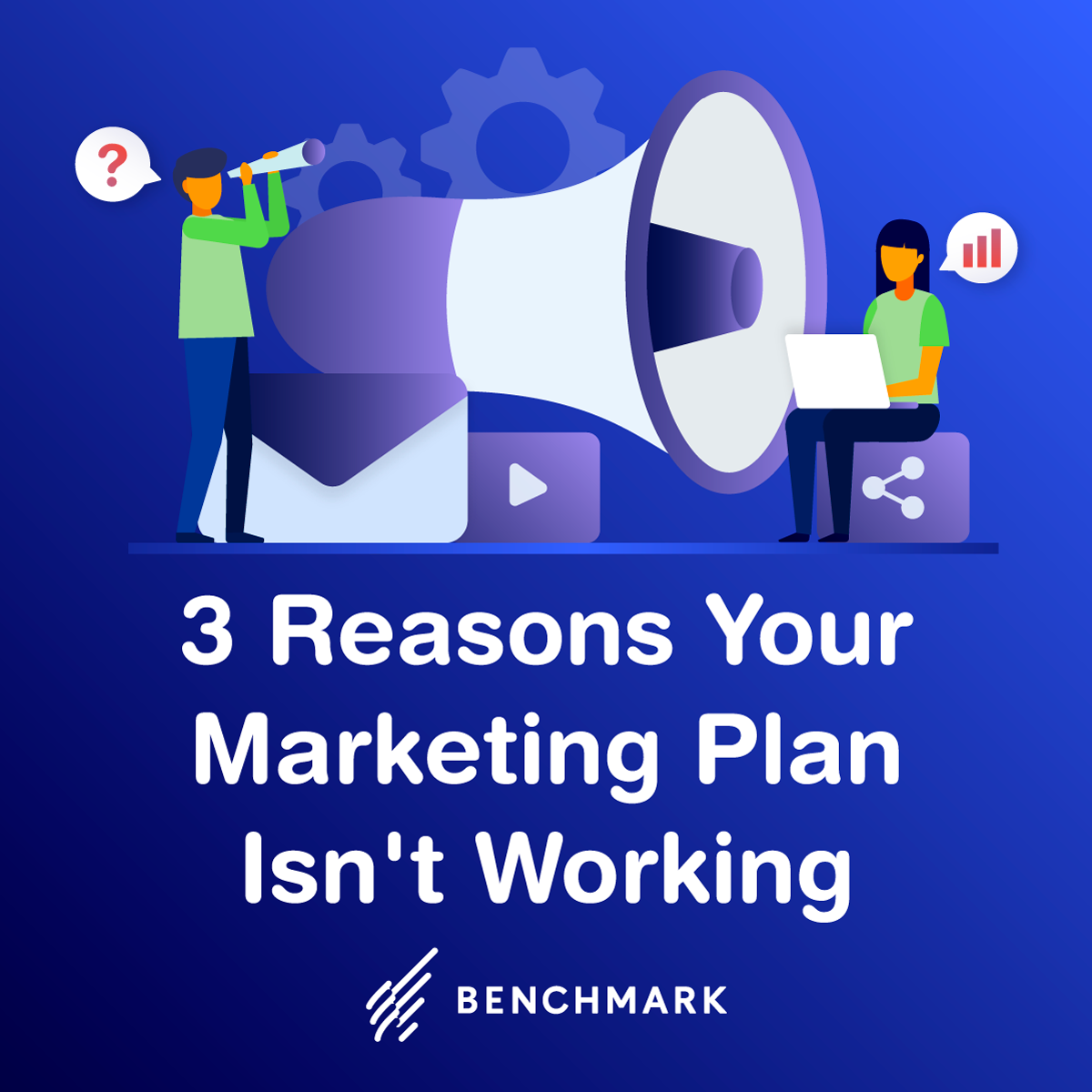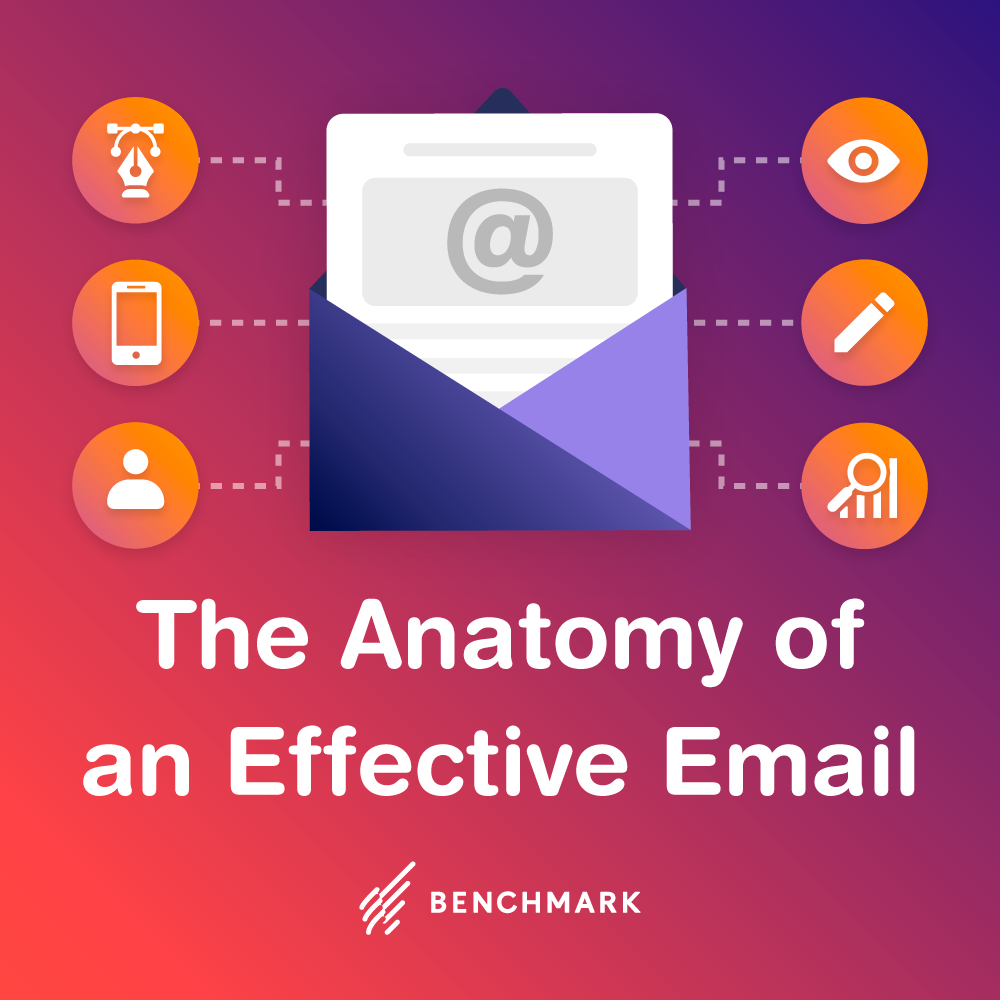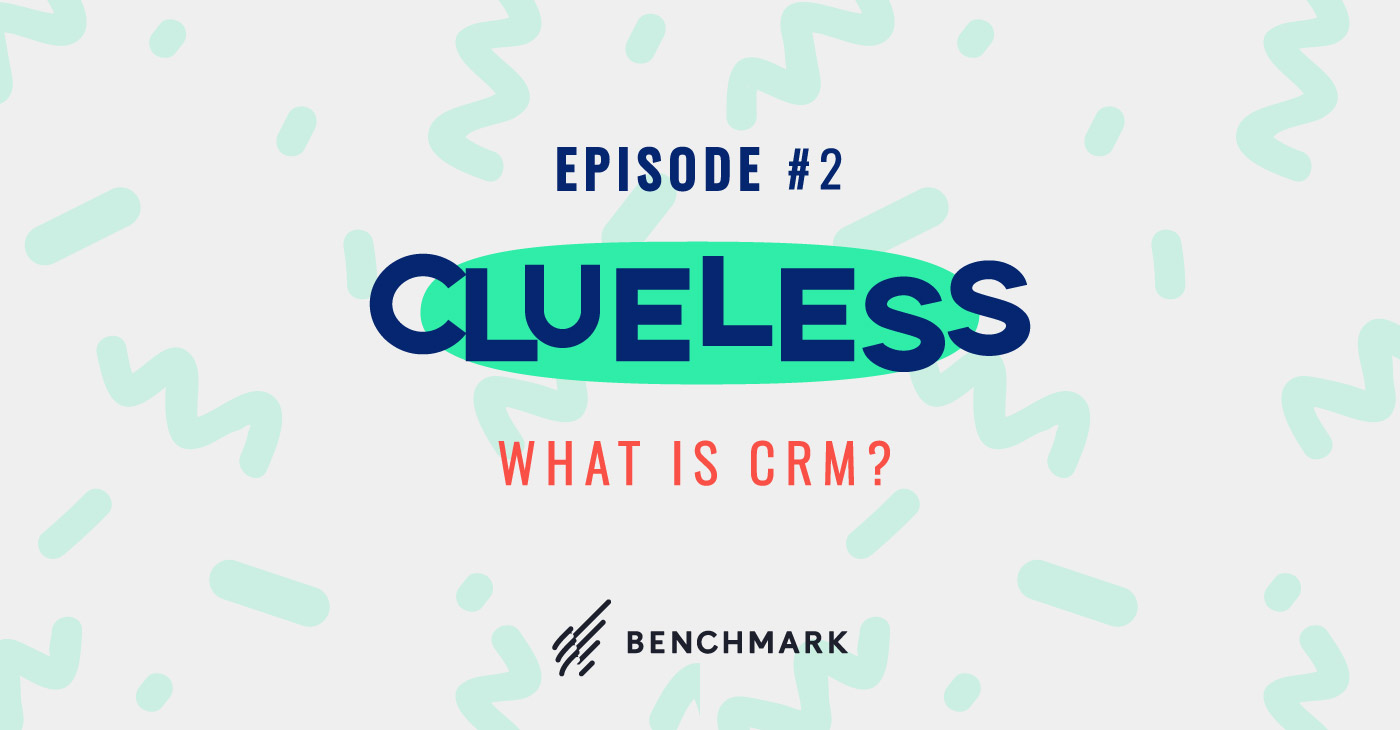
In the first episode of Clues for the Clueless CRM Marketer, we introduced the podcast and then went on a long tangent that confirmed what all of us here at Benchmark already knew: Paul can talk. Since we never even got to the first talking point in our outline last episode, we resume our conversation on “What is CRM?”
00:21 Andy Shore: Hi, everybody. Welcome back to another episode of Clues for the Clueless CRM Marketer. We’re gonna get back into it with what is CRM. Because Paul was so excited to talk here, and we didn’t even get to the first talking point, we had plans, so we’ll get into that today and make sure we’re teaching you everything we have planned.
00:42 Paul Rijnders: Yeah, sometimes I get very excited and I’m kind of just… You take off the lid and it’s like someone had shaken a soda, CRM soda. [chuckle]
00:51 AS: Exactly. We tapped the can a little bit so it calmed down and…
00:56 PR: We should ought to rename the podcast to CRM soda ’cause I like that. [chuckle] It feels very effervescent. [chuckle]
01:04 AS: People are moving away from soda, it’s all about the La Croix now, we’re not gonna switch name, we’re committed.
01:12 PR: Yeah, I think. Okay.
01:15 AS: But thanks, everyone, for tuning in and I hope you’re finding this useful so far. We got a lot more great information for you, so we’ll get into it. And we just touched on it a little bit, even though we didn’t directly say it, but what you were saying in that customer-centric focus is, CRM’s about building relationships. I mean, relationships are in the name.
01:35 PR: It definitely is, and that’s the key there. The key is, is that you really want to get as much information as possible either at your computer or if you’re at some place out in the field, does your CRM allow you to do this mobile-ly and can you type that in really quickly as a note or whatever? One thing that’s nice in our CRM is we’ve got this feature, if you’re in Chrome, where you just click Record, and then that’ll record the note, and you can just talk. And that’s really convenient. I like to use that a lot myself, ’cause sometimes it just gets hard typing, right? So anyway, the idea is, is that is that you just wanna get as much information as possible so that you can know that customer the next time you talk to them, however that is.
02:21 AS: I just had the thought of, you know those people who walk around with voice recorders they’re leaving themselves memos to plan for their memoir at some point or whatever it may be, either like whether it’s a grandparent or something like setting in the benchmark CRM and being like, “Here’s this cool feature where you can leave yourselves notes,” and I was just tracking just like all the inner thoughts of this person. I don’t know, I think that’d be really funny. Probably inconsequential to what we’re talking about, but amusing to me nonetheless. You’re talking about you can access anywhere to get that information. And I think, thinking about it in the context of our company, we use CRM and we’re also a worldwide company, we have offices across the globe.
03:08 AS: And one of the advantages of that is our 24-hour support doesn’t all have to be out of our US headquarters because then they can just do it on their time zones and lets us have 24/7 support. And thinking about how you’re saying that anyone could access it, it goes into this database that if you can do that and have one central place or a worldwide workforce to work together and store all that information and be able to… It’s consistency. It’s like when you go to a chain restaurant, and you know that one dish you like is gonna be the same anywhere you get it across the world because that’s how it’s set up.
03:46 PR: Yeah, it’s really important that all your team is not only strong, but they’re all rowing in the same direction, right? I mean, can you imagine if you had five people on a boat and they’re all rowing five different ways, you wouldn’t get anywhere very fast.
04:00 AS: Yeah, it works good for comedies and cartoons but probably not business.
04:04 PR: Not business, right? So that means that if you got three or four people that are interacting with that person, they should have a common place where they look at and they say, “Okay, cool, these are my touch points. These are the interactions that I had with this customer. This is what’s important to this customer.” Now, there’s a couple ways to think about doing it. If you just pull out all your information and you just dump it into notes everywhere, sure, there’s ways to extract all that, but that’s on a little bit higher order, but it’s possible. But you probably should have at least a little bit of discipline. Maybe you as a team should decide, “Okay, what’s important and what’s not important?” That way, when you talk to your customers, you kind of decide as a team what we wanna put down there.
04:49 PR: And by the way, there’s a few ways of doing that. There’s, you can put down that data in fields that you make ahead of time, like what’s their favorite soda or what’s their favorite non-soda beverage. Or you could do it by the way of notes, what we’ve just talked about or you can even do a tag. And tags are nice because those are things you just put down that are maybe something that identifies that customer at that moment and it could be deleted, but you can sort by those things too, and then you kinda see patterns that come up with that.
05:18 AS: Yeah, I think tags is a good point, ’cause sometimes you may wanna run a specific campaign or something, it’s like I wanna talk to all customers who like this or use this product or some sort of thing that lets you just sort it out. From the email marketing side, that’s segmentation, that’s what makes sense to me. I think I’m gonna keep finding my way into CRM, understanding through the lens of email marketing.
05:47 PR: It’s interesting how you bring that up too, because there’s what the marketer needs, right? And there’s what the sales person is facing the customer can get. For many of our customers, they might be the same person, and that’s a tough spot to be in anyway. And there’s a lot of work for that person. If you are lucky enough to have a team where at least one person is front-facing your customers, and then you have someone else actually doing the marketing, the marketer is gonna be like, “Okay, well, you know what? This is important to me. I need these five questions answered, that way I can set up something very targeted and very specific. And bam! Everything is just gonna be so perfect.” Well, guess what? It’s not perfect for that person facing the customer.
06:27 PR: If a customer walks in, you know they’re out in the field with their phone, the CRM’s open on their phone, they’re not gonna say, “Hey, you know what? Before we get started, Bob; before we get started, Cindy, I gotta answer this question.” Right? And so, are they gonna read off five questions? That person, that customer’s gonna feel like they’ve been completely, just either have been sold to or that they’re just some kind of piece of meat and their best need isn’t addressed. Or maybe the person is just talking to the customer naturally, and then they’re saying, “Hey, wait, hold on. You said this? Okay, I gotta find that. Okay, that must be field number 21. Okay, I gotta get that. Okay, go on.” You know?
07:02 PR: So this is where tags can help out. So what you could do is that you can mentally just jot these four or five things down, just note them, or just write them down on a pad of paper. Or even if you’re at your computer, you just type that message. If that tag already came up before, it’ll automatically suggest that, then you just hit Enter and go, “Oh, yeah, that’s the one.” And it’s all a very natural process. You get those four or five bits of information, and now they’re in there, the conversation could go on, and you don’t have to stop to say, “Hey, you know what? Let me fill out this form.”
07:30 AS: Yeah. That makes sense. That’s how you foster that relationship and build those relationships is knowing the way to sort and organize it so that you’re not harming that relationship. But I wanna thank everyone for tuning in. I think we’ve exhausted our time for today, and before we get caught on another tangent, we’ll say goodbye and we’ll catch you next time. Bye, everybody.
